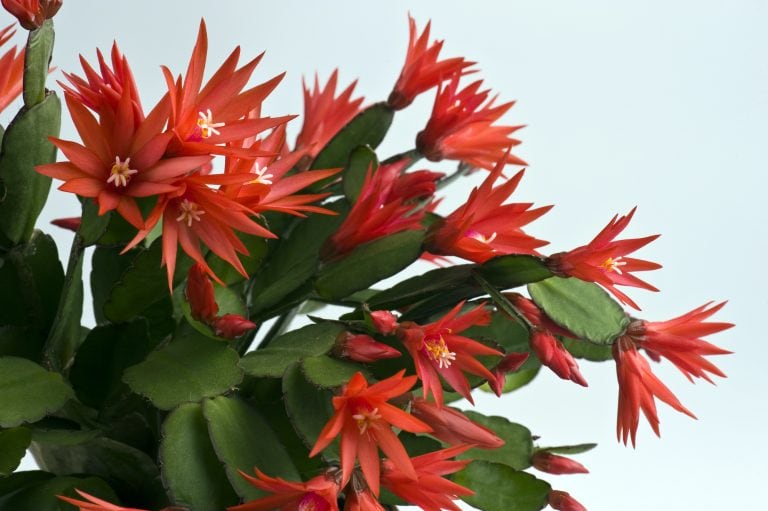Christmas cacti, often heralded for their vibrant blooms during the holiday season, captivate many enthusiasts with their diverse varieties. Each variety showcases unique characteristics, producing an array of colors and forms that enhance their decorative appeal. As we delve into the enchanting world of these succulent plants, one might ponder: which Christmas cactus variety captures your heart? Understanding the subtleties among them can pose a delightful challenge for any cactus aficionado.
Before embarking on this exploration, it’s essential to recognize the primary species: the Schlumbergera, commonly known as Christmas cactus. This genus includes several hybrids and cultivars, each boasting distinctive attributes. Let’s unravel the beauty encapsulated within photographs of diverse Christmas cactus varieties and learn how to appreciate their unique grandeur.
When observing Christmas cacti, one cannot help but notice the exquisite range of colors. While traditional hues include vibrant pinks, reds, and whites, more unusual varieties exhibit lilacs, corals, and even bicolored blossoms. For instance, the ‘Holiday Cheer’ variety presents a delightful fusion of pink and white petals. This interplay of color creates a visual feast that is most alluring when captured in photographs. So, how do you ensure that you adequately represent these shades in your pictures? Effective lighting is key. Natural light tends to accentuate the plant’s vibrancy, highlighting the delicate texture of the petals.
Succulent photography beckons one onto a stylistic journey, which warrants consideration of creative angles. To elevate your photographic endeavors, try capturing images from various perspectives. An overhead shot can showcase the intricate arrangements of blooms, while a close-up can highlight remarkable details such as the velvet-like texture and the unique form of the stamens. Envision framing the plant against a contrasting backdrop; this juxtaposition can further amplify the cactus’s striking allure. However, positioning the plant in harm’s way, exposed to excessive light or drafts, could risk its vitality. Balancing aesthetic and botanical health becomes the quintessential challenge for the photographer.
Exploring beyond color, one must acknowledge the intriguing shapes and sizes inherent to different Christmas cactus varieties. The ‘Easter Cactus’ (Hatiora gaertneri), for example, can be mistaken for its Christmas counterpart but differs in bloom time and growth habit. While Christmas cacti tend to grow with broad, flat segments, Easter cacti exhibit a more rounded growth pattern. Capturing these nuances in photographs requires keen observation and understanding of each plant’s taxonomy. Consider taking a series of images that display the growth pattern over time. Documenting changes in form can offer a remarkable narrative, engaging viewers through visual storytelling.
Lighting remains pivotal in showcasing the subtle yet significant differences in leaf structure as well. Different varieties display variations, from jagged edges to smooth contours. Each shape speaks volumes about its origins and adaptability. When photographing, experiment with backlighting to illuminate these aspects beautifully. However, one must remain vigilant; direct sunlight can result in overexposure and obscure the finer details. This highlights the delicate balance between exposure and representation.
The seasonal significance of Christmas cacti evokes a unique charm that can be wonderfully captured in photography. Often gifted during festive occasions, these plants symbolize love and friendship. Consider documenting your cactus blooms during the holiday season alongside family gatherings or celebrations. Combining human elements with nature creates emotive photographs that elevate the cactus’s visual narrative. The challenge, then, lies in intertwining human stories with botanical beauty—a task that demands a thoughtful approach.
As one explores various cultivars, the ornamental flair of the ‘S bishp’s Crown’ should not be overlooked. Sporting cascading blooms, this variety is often displayed in hanging baskets, adding a three-dimensional quality to the visual experience. Photos of cascading blooms can convey a sense of abundance, reminiscent of the season’s joy. For those with a penchant for creativity, consider abstract compositions that play on the forms and colors of these stunning blooms. However, the experimentation may lead one to a frustrating realization: capturing the essence of beauty is subjective and often elusive.
The Christmas cactus thrives in specific conditions, and photographing them in their natural habitat can provide context and depth to the images. These plants prefer a humid environment, which showcases their vitality. When photographing in such settings, the interplay of moisture and light can create an ethereal quality in your images, revealing the joy these plants bring to life. However, caring for them may breed additional challenges; maintaining optimal humidity while fulfilling their light requirements can prove to be a learning curve for many growers.
To conclude, the world of Christmas cacti filled with magnificent varieties and stunning photographs invites an exploration of beauty intertwined with the challenges of botanical care and artistry. Every photograph tells a story, encapsulating not just the visual claims of the cactus but also the emotions associated with the holiday cheer they evoke. Whether you are a casual observer or a devoted collector, the journey through the landscape of Christmas cactus varieties offers both aesthetic delight and challenges that enrich the experience of plant and photography alike.





Leave a Comment